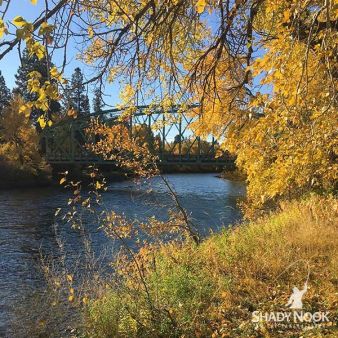by Chris Hunt
I'd lived in Idaho for 15 years, and I'd never fished the Middle Fork of the Boise, despite the accolades my western Idaho friends kept piling atop the river's reputaiton. In Idaho, it's a constant battle—there are just too many choices, and where I live, in the shadow of the Tetons, it seems silly to drive four hours west when I can be poking up Bear Creek or Rainey Creek or some wild tributay of the South Fork in less than an hour.
But here it was, July, and I'd been over in Boise for a meeting. I could head home to a deskful of computer work, or ... I could take a little detour and secretly check the Middle Fork off my list.
It was an easy choice.
And, frankly, I had a bit of work-related motivation. TU had just launched its TroutBlitz effort—a citizen-science project designed to encourage anglers to record their catches in the field and upload the data to TU's Science Team-—and I was neck-and-neck with fellow TU staffer Dan Dauwalter on the number of observations I'd recorded. I figured I'd explore the Middle Fork for a bit and then follow a few blue lines on the map in search of wild backcountry trout. I'd snap a few photos, upload the data and seizd the TroutBlitz lead from Dan.
You know... work.
I did manage to find some wild redbands west slope cutthroats in a little creek way up in the drainage and, in the name of science, of course, I photographed my catches and uploaded the location via the easy-to-use iNaturalist interface that TroutBlitz takes advantage of. And, briefly, I took the lead from Dan.
This year, starting on May 23 (the Saturday before Memorial Day is the traditional fishing opener in the Rockies where I live), TU is relaunching its TroutBlitz effort, and we're encouraging more anglers to get involved and go fishing for science all across North America. And, to sweeten the deal, we're offering some truly incredible prizes each month through October, and a grand prize at the end of the "season" for the anglers who record the most observations and the highest number of trout species.
And, Dan, no matter how many fish we record, you and I aren't eligible to win. Sorry, buddy.
72-piece attractor dry fly assortment from FlyAssortments.com
What's at stake? The angler who uploads the most observations between May 23 and June 30 will win a 72-piece attractor dry fly assortment from FlyAssortments.com. The angler who uploads the highest number of species observations will win the FlyAssortments.com 36-peice caddis assortment. Every month, over the course of the summer, FlyAssortments.com will contribute two new assortments—they'll be announced just before the first of each month.
36-piece caddis assortment from FlyAssortments.com
The interface is really simple, but if you want to help TU's Science Team, take a look at the TroutBlitz manual that will give you the best information we've got when it comes to how to take the best photographs, how to make sure your fish is identifiable and how to map your catch. This way, you can help provide real-time data to our Science Team that they can use to identify the current ranges of wild and native trout, the persistence of non-native trout and the potential for protection and restoration campaigns that TU can initiate to ensure the long-term survival of native trout in their native waters.
In short, it's important work. But if you're like me, and the blue lines on the pages of the Gazetteer call to you, this is a project that can be a lot of fun. And, with hundreds of dollars in premium flies on the line, why wouldn't you go fishing for science this summer?
Chris Hunt is TU's national communications director. He works from Idaho Falls, Idaho.






